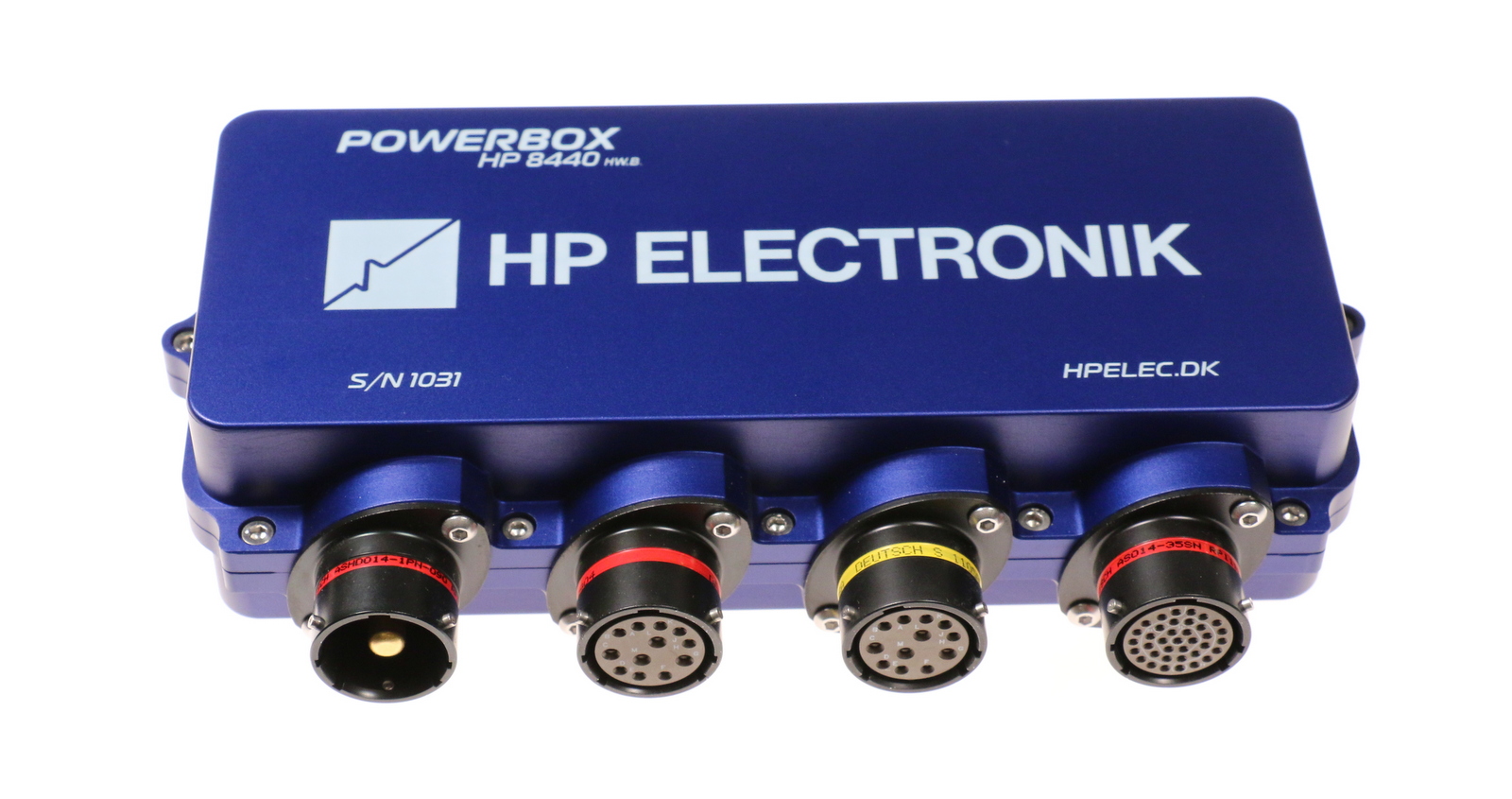HP Powerbox Power Distribution Module

Overview
The PCM is an innovative, intelligent and programmable solid state module that replaces relays and circuit breakers, simplifies wiring harnesses and provides diagnostic capabilities.
The PCM is ultra-compact (197 x 107 x 46 mm including the Autosport connectors) and lightweight (only 840 grams) but powerful (max 200 Ampere continuous current draw), providing an effective and inspired alternative to conventional relays, circuit breakers, fuses and wires that can so often be a tangle of complexity and untidiness around a typical racing car’s power junction box. The PCM has 18 high power channel each allowing a maximum peak current in excess of 60 amps and individual adjustable peak current time of up to 10 seconds.
The PCM exchanges data with other modules in the car primarily via CAN. It can be controlled entirely by 32 individually configurable CAN channels (bit, byte or word (Intel or Motorola format)) or by combining CAN and additional 11 conventional input switches.
Its CAN communication is highly user-defined, allowing an optimum integration with other modules in the car – for example the engine management system, switch panels, CAN expansion modules, dashboard (to display error messages and status) and data logging system. CAN identifiers can be selected freely both for importing data and for exporting PCM channels and switch status.
Logic conditions can be created using 20 virtual input channels. The channels combine switching conditions defined by up to 3 of the PCM’s entire channels plus other virtual channels. Any combination of conventional inputs, CAN channels or outputs can be used to create logic links.
The software is designed to be both easy to use and straight forward to configure. Each of the 11 sections has been carefully constructed to give the user clear and easy to edit information. The PCM’s general status is displayed as soon as a connection is established. Tracing eventual electrical errors is very easy and is also supported by a separate diagnostic section.
PCM software is divided into 11 main groups:
- General – System overview and test
- Diagnostic – Error messages and current limits
- Inputs – Naming of all input channels
- CAN Inputs – Definition and scaling of CAN channels
- Virtual Inputs – Definition of logic conditions
- CAN Export – Configuration of CAN export
- Outputs – Definition of outputs, timers and fuses
- Flash – Configuration of flash functions
- Low battery – Automatic power preservation
- Start Button – Power saving during engine start
- Low Current – Warning of potential component failure
-
Main Features
- Maximum 200 Ampere continuous.
- 34 individually programmable output channels.
- Operated by 11 conventional, 32 CAN channels and by 20
virtual channels, controlling each of the 34 output channels
individually.
- Any combination of input and output channels can be selected.
- Easy creation of logic switching using virtual input channels.
- Dedicated diagnostics section.
- Automatic shut-down of selectable output channels at low
battery voltage threshold.
- CAN switching can be controlled by membrane switch panels,
the engine management system, data logger unit, etc.
- 5 programmable overriding flash functions.
- Programmable “Low Battery” power conservation setting.
- Engine Start strategy ensures maximum cranking speed.
- All inputs, outputs and functions can be named individually.
- Channel status, current draw and real time diagnostics exported
via CAN.
- Channel setup by PC software and USB link.
- Diagnostic status displays open circuit, short circuit or overload.As used in championship winning cars
- Le Mans LMP1 and LMP2 prototypes
- ALMS winning Porsche RS Spyder’s
- FIA GT1 sportscars
- FIA GT3 Callaway Racing championship winning Corvette’s- FIA GT3 Reiter Lamborghini Gallardo LP560 and LP600
- Pagani Zonda R
- British Touring Car Championship winning Vauxhall’s
- Touring cars in other international championships
- Rally raid cars – for example Mitsubishi
- Rally cars – Toyota in the new Auris S20Downloads
User Manual